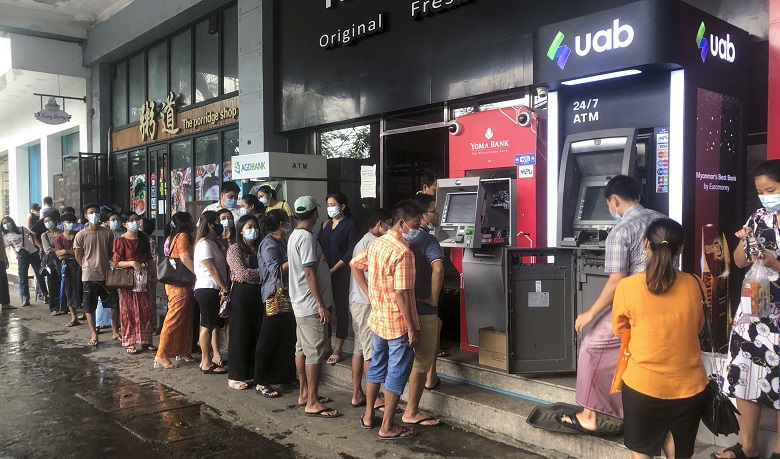Key developments and findings
Myanmar’s ongoing political turmoil and a rapidly-rising third wave of COVID-19 cases are severely impacting an economy that had already been weakened by the pandemic in 2020.
The economy is expected to contract around 18 percent in Myanmar’s 2021 Fiscal Year (Oct 2020-Sep 2021), with damaging implications for lives, livelihoods, poverty and future growth.
An 18 percent contraction, coming on top of weak growth in FY2020, would mean that the country’s economy is around 30 percent smaller than it would have been in the absence of COVID-19 and the military takeover of February 2021.
Around 1 million jobs could be lost, and many other workers will experience a decline in their incomes due to reduced hours or wages.
The share of Myanmar’s population living in poverty is likely to more than double by the beginning of 2022, compared to 2019 levels.
Economic activity has been hit by reduced mobility and incomes, protests and labor shortages, as well as the ongoing disruption of critical business services, including logistics and telecommunications, and public services such as health and education.
Despite bank branch re-openings and several interventions from the Central Bank of Myanmar, physical currency continues to be in short supply and access to banking and payment services remains limited.
As of mid-July, the Myanmar kyat had depreciated by around 23 percent against the US dollar since late January, which combined with trade disruptions has led to rapid price increases for some imported products, including fuel.
Farmers have been affected by lower wholesale prices for some crops, higher input prices, and limited access to credit.
Taken together, these shocks have weakened consumption, investment, and trade, and disrupted businesses’ operations and the supply of labor and inputs.
Over the longer term, recent events have the potential to jeopardize much of the development progress that has been made over the past decade. Significant impacts on investment, human capital accumulation, and the environment for doing business are likely to impair prospects for economic growth over the longer term.
